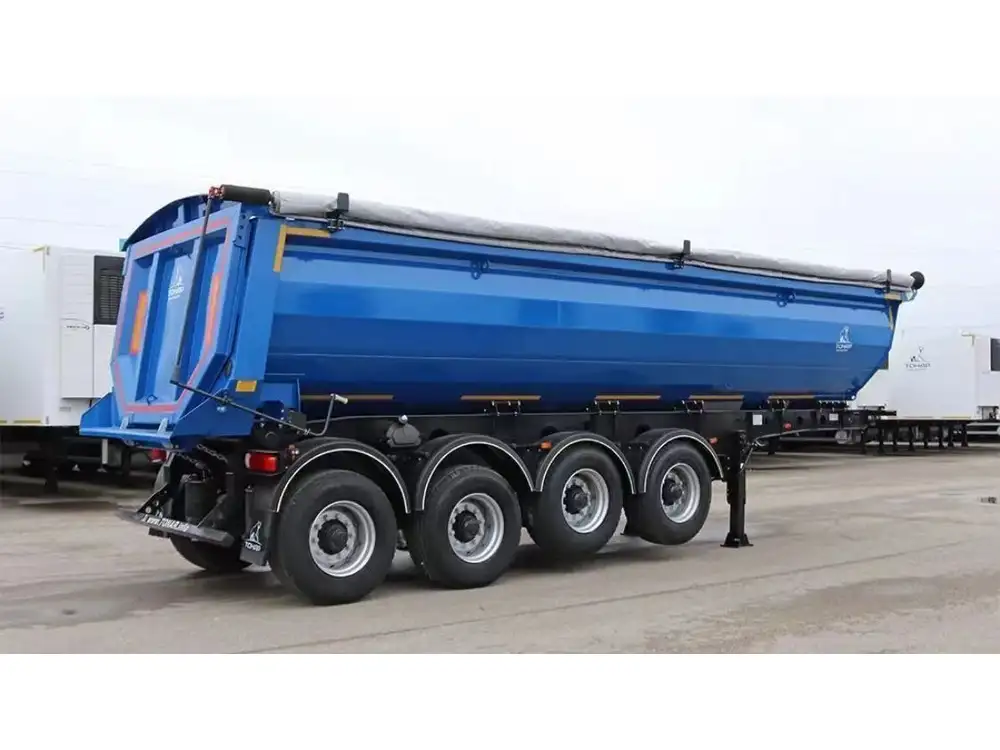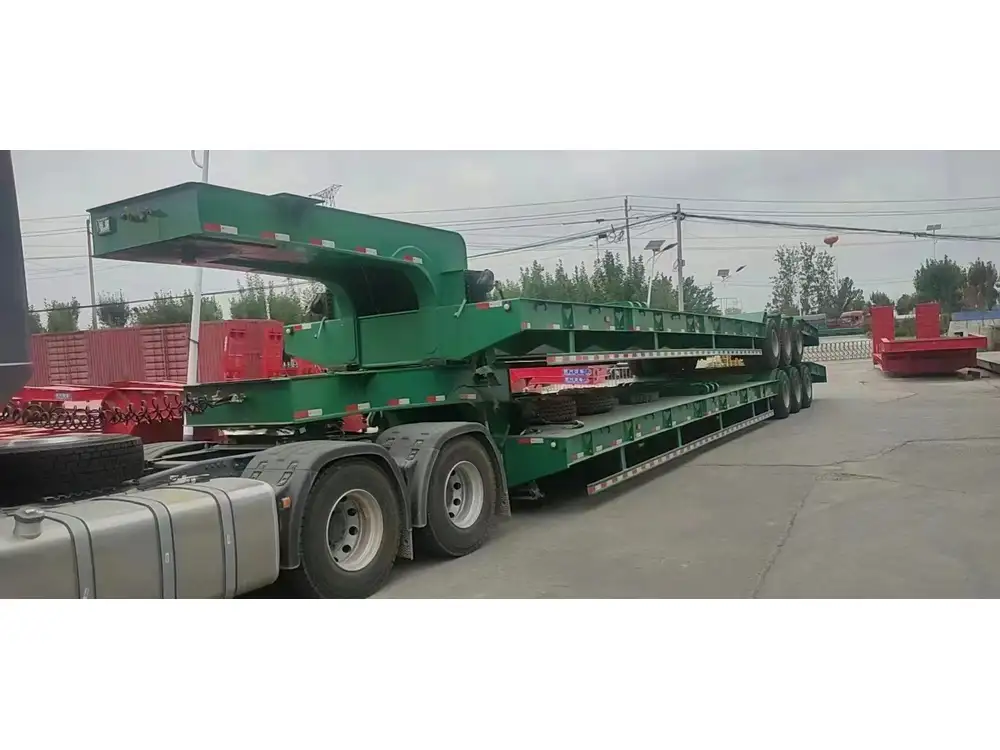In the transport and logistics industry, the question of how many tons of freight can fit inside a semi-trailer is pivotal. The effective utilization of a semi-trailer’s capacity directly impacts shipping costs, operational efficiency, and overall profitability. This comprehensive guide explores the specifics of semi-trailer freight capacity, factors affecting it, and how different trailer designs fine-tune their utility.
The Basics of Semi-Trailer Freight Capacity
Standard Freight Capacities Overview
| Trailer Type | Common Lengths | Weight Limit (lbs) | Approx. Cargo Volume (cu. ft.) |
|---|---|---|---|
| Dry Van | 48’ – 53’ | 45,000 – 52,000 | 2,500 – 3,300 |
| Flatbed | 48’ – 53’ | 48,000 – 53,000 | Variable – depends on cargo |
| Refrigerated (Reefer) | 48’ – 53’ | 44,000 – 45,000 | 2,700 – 3,000 |
| Step Deck | 48’ – 53’ | 40,000 – 48,000 | Variable – depends on cargo |

Maximum Legal Weight Limits
In the United States, the maximum allowable weight for a truck and trailer combination is limited by federal and state regulations. Generally, the maximum weight is set at 80,000 pounds for the combination vehicle, which includes the truck and trailer. Of this total, the maximum that can be carried on the trailer itself is typically around 45,000 to 52,000 pounds, depending on the specific design and federal regulations.
Weight Distribution and Axle Configuration
The design of a semi-trailer affects its weight distribution capabilities. Different axle configurations play a significant role in how weight is supported:
- Single Axle Trailers: Commonly have a max weight limit of 20,000 lbs per axle.
- Tandem Axle Trailers: Generally allow up to 34,000 lbs.
- Tridem Axle Trailers: Can accommodate upwards of 42,000 lbs.
By optimizing weight distribution across these axles, the overall cargo capacity can be maximized while adhering to legal limits.
Factors Affecting Freight Capacity

1. Trailer Type
The type of semi-trailer significantly determines how many tons of freight can be loaded. Each design serves different cargo needs:
- Dry Vans: Ideal for general cargo; they offer substantial internal volume but are limited to non-perishable items.
- Flatbeds: Allow for larger and heavy items. They are versatile for lengthy goods but may handle inconsistent volume efficiencies.
- Reefer Trailers: Designed for temperature-sensitive items. They have slightly reduced capacity due to cooling equipment.
2. Cargo Nature
The nature of the cargo also influences how much freight can be loaded:
- Density: Heavy and compact items (like metals) maximize the weight limit more effectively than lighter, voluminous items (like textiles).
- Stackability: Items that can be stacked may allow for greater utilization of vertical space, enhancing overall capacity.
3. Legal Regulations
It is paramount to follow federal and state regulations. Exceeding legal weight limits can not only lead to fines but may also compromise safety on the roads.
Key Considerations:
- State Weights: Each state may have variations on weight regulations.
- Special Permits: Some loads may require permits for oversize or over-weight conditions.

4. Vehicle Specifications
Various specifications of the towing vehicle can impact the total freight capacity, including:
- Engine Power: Higher engine power can allow for heavier loads.
- Chassis Strength: A robust chassis design supports increased weight capacity.
How to Calculate Freight Capacity in Semi-Trailers
Understanding how to properly calculate freight capability can ensure optimized loads.
Simple Formula for Calculating Freight Capacity
[ \text{Freight Capacity (lbs)} = \text{Maximum Weight Limit (lbs)} – \text{Tare Weight (lbs)} ]Where:
- Tare Weight: The weight of the empty trailer, which varies by design but usually ranges between 10,000 and 15,000 lbs.

Example Calculation
Assuming a standard dry van with a maximum weight limit of 45,000 lbs and a tare weight of 13,000 lbs:
[ \text{Freight Capacity} = 45000 – 13000 = 32000 \text{ lbs} ]This means the effective freight capacity for this trailer is 32,000 lbs.
Volume Calculation
To translate the freight capacity into a more usable form, especially for less dense materials, cargo volume can be calculated as well:
- For bulk goods, knowing the volume of cargo helps in maximizing space.
Volume = Weight/Density

Example Calculation for Volume
If a shipment of goods weighs 10,000 lbs and has an average density of 10 lbs/cubic foot, then:
[ \text{Volume} = \frac{10000 \text{ lbs}}{10 \text{ lbs/cubic foot}} = 1000 \text{ cubic feet} ]Practical Applications: Load Maximization Strategies
1. Weight vs. Volume Loads
Semi-trailers can be organized in two primary ways:
- Weight Load Management: Optimizing weight to the maximum load capabilities.
- Volume Load Management: Prioritizing the overall volume, particularly in cases of lighter materials.

2. Mixed Load Strategies
Many logistics companies utilize a combination of both strategies by:
- Loading heavier materials at the bottom and lighter cargo on top.
- Using blocking and bracing techniques to secure cargo and optimize space.
3. Seasonal Adjustments
Different seasons can lead to fluctuations in freight demand, affecting how trailers are loaded. Adjusting strategies according to peak shipping seasons can lead to improved efficiency.
Conclusion: Maximizing Semi-Trailer Efficiency
Understanding just how many tons of freight a semi-trailer can accommodate revolves around multiple interacting factors. From vehicle type to legal regulations and load management strategies, every aspect plays a crucial role.
By grasping the fundamentals of freight capacity and employing astute logistical strategies, manufacturers and shippers alike can maximize efficiencies, reduce costs, and navigate the complexities of freight transportation with aplomb.
Whether you’re optimizing load distributions or analyzing vehicle specifications, knowing the intricate details allows for more informed decisions in your operations, enabling better alignment with business goals and efficient logistics management.
In the world of freight transport, knowledge is not just power—it’s profit.



